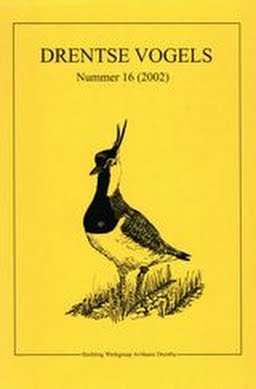2002
IJsvogels Alcedo atthis als bosbewoners: de (geringe) aantrekkingskracht van een Drents ven
Publication
Publication
Drentse vogels , Volume 16 - Issue 1 p. 47- 52
At a small fen (18 x 16 m) surrounded by heath- and woodland in the Berkenheuvel Estate (near Doldersum, 52°54’N, 6°15’E), twelve Common Kingfishers were recorded from May 1992 through October 2002. Like most other fens in Drenthe, fishes are absent in these rather acid waters (pH 4.5-4.9). The duration of their stay was on average 5.9 minutes (not including a bird which was seen on 24 August 1995, on 11.50 brand 18.00 hr). Six Kingfishers which did not attempt to capture prey, stayed only 2.5 minutes on average (Appendix 1). Among preys captured, the following were identified: lx Triturus vulgaris (neotenous), 4x Rana esculenta (young ones), 4x Ilybius sp. and 3x Notonecta glauca. All prey items were captured by diving from perches, then transported to the nearest perch and battered (also the waterbugs and backswimmers) before being swallowed. Catching frequency varied between 2 waterbugs in 5 minutes to 3 little frogs in 14 minutes. Common Kingfishers frequented the fen exclusively in years with relatively high population levels, i.e. when recovered from high mortality during cold or severe winters (Figure I). As the species is a rare breeding bird in the northern Netherlands, it is argued that the majority of visitors must have had a (north)eastern origin. The fen was visited only in July (2x), August (4x), September (4x), November (lx) and December (lx), indicating that mostly passage migrants were involved. Wintering birds concentrated along eutrophic waters with fish populations. Evidently, nutrient-poor fens are visited during migraton and dispersion, but their suitability as food resources is negligible.
| Additional Metadata | |
|---|---|
| Drentse vogels | |
| CC BY 3.0 NL ("Naamsvermelding") | |
| Organisation | Werkgroep Avifauna Drenthe |
|
Rob G. Bijlsma. (2002). IJsvogels Alcedo atthis als bosbewoners: de (geringe) aantrekkingskracht van een Drents ven. Drentse vogels, 16(1), 47–52. |
|
